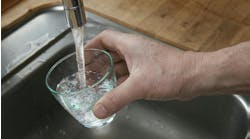WASHINGTON — Despite the entreaties of plumbing-heating-cooling organizations, the U.S. Department of Energy has selected the Building Performance Institute to certify workers for its national home weatherization program.
The coalition of 22 trade associations sent a letter to the Department of Energy in June, wondering why they are being frozen out of residential energy auditing and retrofit work. The issue at hand is the voluminous Workforce Guidelines for Home Energy Upgrades. The guidelines are filled with all sorts of stuff about HVAC and plumbing. The problem, according to the 22 organizations signatory to the June 24 letter, is that nobody asked the plumbing and HVACR industries.
On August 4, DOE Deputy Assistant Secretary for Energy Efficiency Kathleen B. Hogan sent a platitude-filled letter to Charlie McCrudden, vice president, government relations for the Air Conditioning Contractors of America, that said DOE and the National Renewable Energy Laboratory were creating a program, “expected to lay the foundation for a stronger Weatherization Assistance Program (WAP) and home energy upgrade industry.”
The industry coalition includes everybody who’s important in the field, such as Air Conditioning Contractors of America, Plumbing-Heating-Cooling Contractors – National Association, Air-Conditioning, Heating & Refrigeration Institute, both model code groups, North American Technician Excellence and the National Association of Home Builders.
Related Articles:
The murky world of energy efficiency politics
Related Articles:
D.C. energy efficiency world gets murkier
The associations worried that BPI, Malta, N.Y., had an inside track to do all of the contractor certification for home energy auditing and energy retrofits. The 22 organizations asked DOE what’s going on with what should be an open process for selecting independent certifying bodies.
In her letter, Hogan said that, “Progress has also been made to help strengthen the worker certifications available to the [Weatherization Assistance Program] and broader home energy upgrade industry. The Alliance for Sustainable Energy, LLC, managing and operating contractor for NREL (“Alliance”) issued a competitive Request for Proposals on March 21, 2011, to nine organizations. Alliance and NREL intend to make one subcontract award to an industry-recognized certifying body to expedite the delivery of four new ISO 17024 accredited certifications for the job classifications most relevant to the WAP workforce.”
A lobbyist for one member of the coalition told CONTRACTOR that none of them were satisfied with Hogan’s response.
Hogan’s letter was dated August 4. By mid-month, the Coalition’s fears were realized when they discovered that BPI had already been selected. It was not publically announced. McCrudden found the announcement buried in a DOE website.
In the Department’s Weatherization & Intergovernmental Program website it states, “NREL issued a competitive solicitation and selected the Building Performance Institute (BPI) to oversee test development and deliver the four new, ISO 17024 accredited certifications by early 2012.”
Those four accredited certifications that BPI will produce are quality control inspector, energy auditor, crew leader and retrofit installer technician.
According to DOE, “In July of 2010, a group of 12 Subject Matter Experts (SMEs) met to perform the Job Task Analysis and to create an examination blueprint that would serve as the basis for the worker certification. A trained psychometrician facilitated the meeting and helped guide the development of these analyses.”
The “Job Task Analysis” for a technician performing home weatherization work details extensive plumbing and mechanical skills. Some of them are simple and straightforward and would not require much training — safe handling of tools, for example, or keeping a clean work area. Others require more detailed knowledge.
The Job Task Analysis breaks down needed skills into the categories of “ability to” and “knowledge of.” Under the mechanical equipment section, it would require the ability to remove old equipment and uncrate new equipment. It would require knowledge of asbestos hazards, mechanical code requirements, duct installation and sealing requirements, and electrical disconnects and fuel shutoffs, among others.
The plumbing section of the Job Task Analysis states that a weatherization technician needs to have the ability to install low-flow fixtures. It would require knowledge of “advanced plumbing knowledge” (whatever that means), brazing, domestic water heaters, pipe fitting, plus knowledge of the fuel gas code and gas fitting, a skill that requires licensing in some jurisdictions.
While BPI is doing the certification, it is likely that the training will be performed by Laborers International Union of North America. The union jumped on the green weatherization bandwagon early on. In October 2010, at an event in Cincinnati, LIUNA boasted that U.S. Energy Secretary Steven Chu acknowledged the role LIUNA “is playing in creating family-supporting weatherization jobs in Cincinnati and praised the union’s breakthrough national weatherization training program.”
In response to the announcement that BPI had been awarded the contract, PHCC-NA said it would meet with House Energy and Commerce Committee’s Subcommittee on Oversight and Investigations leadership to dispute the opaque nature of the process and seek some sort of resolution. PHCC also said it planned to submit comments to DOE on the new guideline by Sept. 2, 2011.

